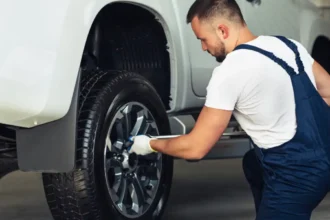As winter approaches, are you prepared for the challenges it brings to your car? Cold weather can take a toll on vehicles, causing everything from battery issues to tire problems. If you’ve ever wondered how to protect your car from the harsh elements, you’re not alone. Winterizing your car is essential to ensure it runs smoothly throughout the season. Let’s dive into the steps you can take to winterize your car for cold weather and keep it in top condition.
Why Is It Important to Winterize Your Car?
Cold weather can wreak havoc on your car if it’s not properly prepared. Freezing temperatures, snow, and ice can affect various components of your vehicle, leading to potential breakdowns and costly repairs. Winterizing your car not only ensures safety but also helps maintain its longevity.
Key Reasons to Winterize Your Car:
- Battery life: Cold weather drains your car battery faster.
- Tire performance: Ice and snow require tires with better grip.
- Fluids: Oil, coolant, and other fluids behave differently in low temperatures.
- Visibility: Frost and snow can reduce visibility, making driving dangerous.
Essential Steps to Winterize Your Car

1. Check and Replace Your Tires
Tires are your car’s first line of defense in snowy and icy conditions. If you live in an area prone to snow, consider switching to winter tires. These are designed to provide better traction in cold weather.
- Why winter tires?: They have deeper treads and are made of softer rubber to grip icy roads better.
- Check tire pressure: Cold weather can cause the air inside your tires to contract, lowering the pressure.
2. Inspect Your Car Battery
Cold weather reduces your car battery’s ability to hold a charge. If your battery is older than three years, it’s a good idea to have it tested and replaced if necessary.
- Signs of a weak battery: Slow engine crank, dim headlights, and a battery warning light.
- Solution: Have your battery tested at an auto parts store or mechanic.
3. Use Winter Windshield Wiper Fluid
Regular windshield wiper fluid can freeze in low temperatures, obstructing your view. Switch to winter windshield fluid, which contains antifreeze agents.
- Why this matters: Clear visibility is crucial during snowstorms and icy conditions.
4. Check Your Antifreeze Levels
Antifreeze, also known as coolant, helps prevent your engine from freezing. Ensure your car has a 50/50 mix of water and antifreeze.
- How to check: Look for the coolant reservoir under your hood and check the fluid level. Add more if necessary.
5. Change Your Oil for Winter
Cold weather thickens oil, making it harder for your engine to start. Switching to a thinner oil can help.
- Recommended oil types: Many mechanics suggest using a lower viscosity oil, like 5W-30, in colder months.
6. Keep an Emergency Kit in Your Car
Even with the best winter preparation, emergencies can still happen. It’s essential to have a winter emergency kit ready in your vehicle.
Items to include in your kit:
- A blanket or extra warm clothes
- Non-perishable snacks and water
- A flashlight with extra batteries
- Jumper cables
- Ice scraper and shovel
- First aid kit
- Sand or kitty litter (for traction)
Read More: Best Affordable Electric Cars Under $40,000 in 2024
Conclusion
Winterizing your car for cold weather is a critical step in ensuring your safety and keeping your car in good condition. From checking your tires and battery to using the right fluids, these steps will help your car withstand the rigors of winter. Take the time now to prepare, and you’ll avoid potential breakdowns and costly repairs later.
Whether you’re driving through snowstorms or braving icy roads, knowing how to winterize your car will give you peace of mind and keep your car running smoothly throughout the cold season.








